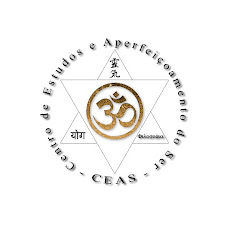Caution: Always check with your doctor if you have any doubts or concerns regarding the suitability of this pose for you.
But before you start doing this exercise do consult your doctor and learn this exercise only under the guidance of a qualified yoga therapist.
Do not do this exercise if you already suffer from any hip, back or heart ailment. Patients suffering from high blood pressure and vertigo are also advised to avoid doing this asana.
Vrischikasana, la posture du Scorpion
La posture du Scorpion (Vrischikasana) est bien illustrée par son nom : le corps ressemble à un scorpion avec la queue en position d’attaque.
Bien sûr, ce n’est pas une posture simple pour débutants. Mais cependant, elle est moins difficile qu’elle peut ne paraître au premier abord.
Elle nécessite de la force, dans les bras et les épaules, notamment, mais aussi un très bon équilibre. Le Scorpion est un jeu de poids et contrepoids. Lorsque vous êtes dans la posture juste, l’effort semble quasiment disparaître…
L’apprentissage de cette posture nécessite la présence d’un professeur.
Postures préparatoires - Avant d’apprendre Vrischikasana, il est recommandé de maîtriser quelques autres postures, telles que:
- La Posture sur la Tête (Sirsasana), pour l’inversion, le renforcement et l’équilibre
- L’Arbre (Vrksanana), pour l’équilibre
- Le Corbeau (Kakasana, appelé aussi Bakasana), pour l’équilibre et fortifier les épaules et les bras
- Le Cobra (Bhujangasana, pour la souplesse du tronc et de la ceinture scapulaire
- La Posture de la Roue (Chakrasana), pour la souplesse du tronc et de la ceinture scapulaire
- Le Chien Tête en Bas (Adho Mukha Svanansana), pour la souplesse des épaules et du haut du dos
- La Tête de Vache (Gomukhasana), pour la souplesse des épaules et du haut du dos
- La Posture du Héro Allongé (Supta Virasana) : étirement de la chaîne musculaire antérieure
Apprentissage de la posture - Plusieurs Yogi pratiquent le Scorpion en montant une jambe (ou même en prenant de l’élan, ce qui est moins bien), puis l’autre. Je l’ai apprise à partir de la posture sur la tête. Je conseille cette dernière technique, surtout si vous pratiquez seul, car elle offre une plus grande maîtrise des mouvements et de l’équilibre. Il y a donc moins de risque de tomber, qu’en prenant un élan pas toujours bien dosé.
Mais une fois bien maîtrisée, la posture se prend ainsi sans problème, selon les deux méthodes. Aujourd’hui le temps me manque pour écrire plus longuement. Je vous propose de regarder cette vidéo américaine du Scorpion (en anglais), car elle explique bien la première technique.
Bienfaits de la posture - Travail cardio-vasculaire
- Meilleure circulation du sang
- Souplesse de la colonne vertébrale.
- Étirement des muscles avant des cuisses
- Ouverture de la cage thoracique
- Améliore la confiance en soi
Recommandation - Cette posture ne peut se faire, qu'une fois que vous vous sentez très à l'aise dans la posture sur la tête et que vous pouvez la tenir au moins deux minutes.
Vrikchikasana avec l’aide d’un mur
• Prendre la posture sur la tête (Sirsasana) à quelques centimètres d’un mur.
• Puis reculer les pieds, jusqu’à ce qu’ils touchent le mur. Écarter les pieds donnera un meilleur équilibre, surtout au début. Plier les jambes en descendant un peu les pieds sur le mur.
• Décroiser les doigts, puis placer les mains à plat au sol.
• Mettre tout le poids du corps sur les coudes, les avant-bras et les mains. Commencer à décoller la tête, en poussant les avant-bras contre le sol.
• Porter le regard devant soi, vers le mur. Monter la tête, et en même temps, essayer de descendre la poitrine en creusant le haut du dos.
• Commencer à rechercher l’équilibre. Porter le regard devant soi, vers le mur. Monter la tête, et en même temps, essayer de descendre la poitrine en rapprochant les omoplates dos. C’est un jeu de poids et de contrepoids qui joue entre:
1. la hauteur de la tête
2. le creux du haut du dos (en rapprochant les omoplates)
3. la position des pieds et des jambes. Chercher à appuyer de moins en moins sur le mur, jusqu’à pouvoir décoller les pieds.
Pendant toute la prise de posture, garder le ventre tonique et les fessiers contractés, pour protéger les lombaires.
Pour les premiers essais, préférez la présence de votre professeur de yoga.
La posture avec les jambes tendues (aussi appelée Pincha Mayurasana) peut sembler impressionnante. Elle est pourtant nettement plus facile, car les jambes tendues et bien serrées, font un excellent jeu de poids et de contrepoids: le travail d’ajustement de l’équilibre s’en trouve affiné. C’est pourquoi je préconise cette variante lorsque l’on souhaite apprendre Vrischikasana sans le mur.
Les indications pour la prise de la posture sont quasiment les mêmes qu’avec le mur, sauf que c’est l’ajustement des jambes tendues qui va aider à faire la balance du poids, et non plus les pieds appuyés contre le mur.


